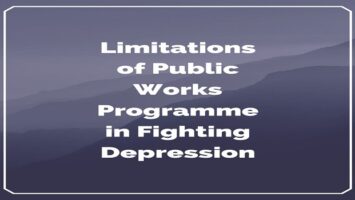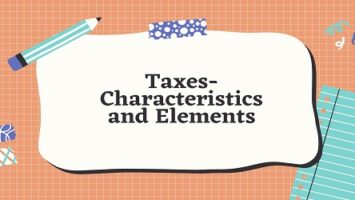Loans vs Taxes:
Sometimes, the government faces the problem of whether a certain expenditure should be met out by raising taxes or by raising loans. Heavy taxation as well as reckless borrowing may ruin the financial structure and may bring misfortunes to the community as a whole. Let us now know, what should be the general principle of raising revenue.
The general principle followed in financing public expenditure is that the normal or ordinary and recurrent expenditure should be financed out of taxes, while non-recurrent and productive expenditures should be met out of loans. This general principle has now been analyzed from different angles.
The government should raise as much taxation annually as the nation can bear, to defray extraordinary or abnormal expenditures, as far as possible from this source. The great advantage of a tax, as compared with a loan, is that the former never leaves any charge behind it in the form of repayment of principal to disturb subsequent budgets. Hence, Mr. M. C. Kenna, Chancellor of the British Exchequer, said that even in the war, taxation should meet ordinary or normal expenditure plus the charges for interest on debt, which is a very high ideal. Therefore, taxation should be preferred to loans, if commerce and industry are not prejudicially affected by the increased taxation.
Loans, on the other hand, are necessary to avoid too rapid an increase in taxation. Some systems of taxation may easily be adjusted to increase expenditure than others. In an unsatisfactory tax system, it is almost impossible to increase taxation. Hence, in abnormal times borrowing money may become important to the State, but this should be the last method to finance public expenditure.
Difference Between Taxes and Loans:
(1) Taxation is a burden on the current income, while borrowing implies the curtailment of the future power of spending.
(2) Taxes come from the annual incomes and involve curtailment of present enjoyments, while a loan comes from savings and reduces the available funds for production in the private sector.
(3) A tax is a compulsory contribution, while a loan is generally voluntary. The pressure of a tax is immediate, while that of a loan is imposed on the future.
(4) The burden of heavy taxation may not be equitable, but the burden of loans is diffused over a long period.
(5) The taxes exercise a solitary and whole-some check on the tendency of an individual to go for extravagant expenditure; while loans may give an expectation of increased income in the future; this expectation of an increased income in the future may make an individual extravagant in the present.
This does not mean that loan finance should outrightly be rejected. In fact, taxation and loans can and should be judiciously combined. A good tax system should possess considerable elasticity, and, therefore, it is very much desirable that an increase in revenue should be raised through taxation. But when a limit of increased taxation is reached, the device of loan to finance public expenditure may be used.
The rules to finance an abnormal outlay for non-economic purposes may be summarized below:
(1) As far as feasible and practicable current expenditure should be met out of the annual receipts and with the increase in expenditure, taxation should also increase.
(2) When there is a non-recurring expense of a large amount, it should be financed through borrowing. This will avoid a serious disturbance to the existing tax system.
(3) When the abnormal expenditure is expected to last for a number of years, the tax structure should be adjusted to meet it.
(4) This principle will not work where- (i) An equitable distribution of increased taxation cannot be secured. (ii) The productivity of various taxes would have to exceed. (iii) Heavy taxation would be politically inexpedient. In any of the last three cases, taxation has to be supplemented by loans.









Comments (No)